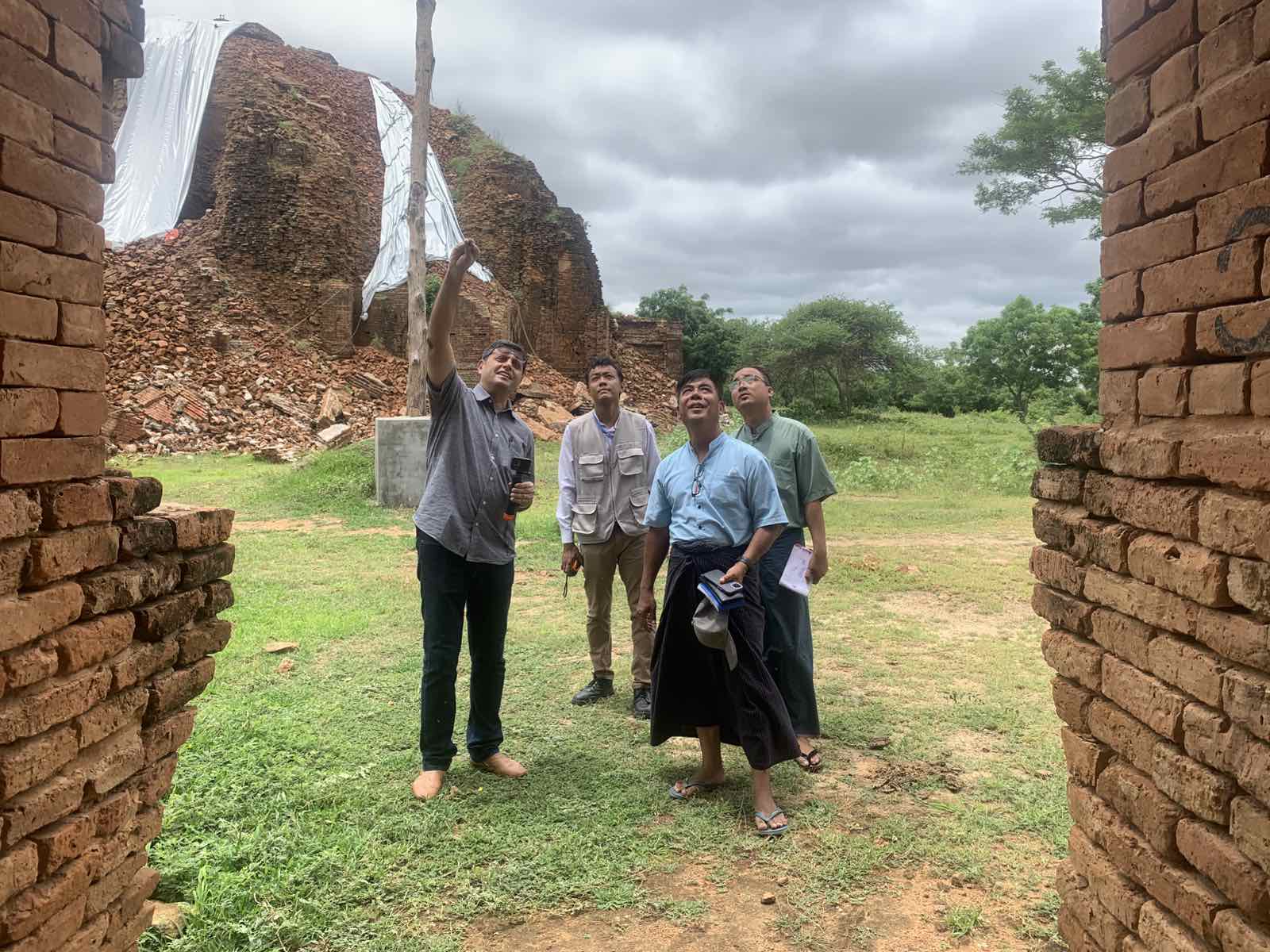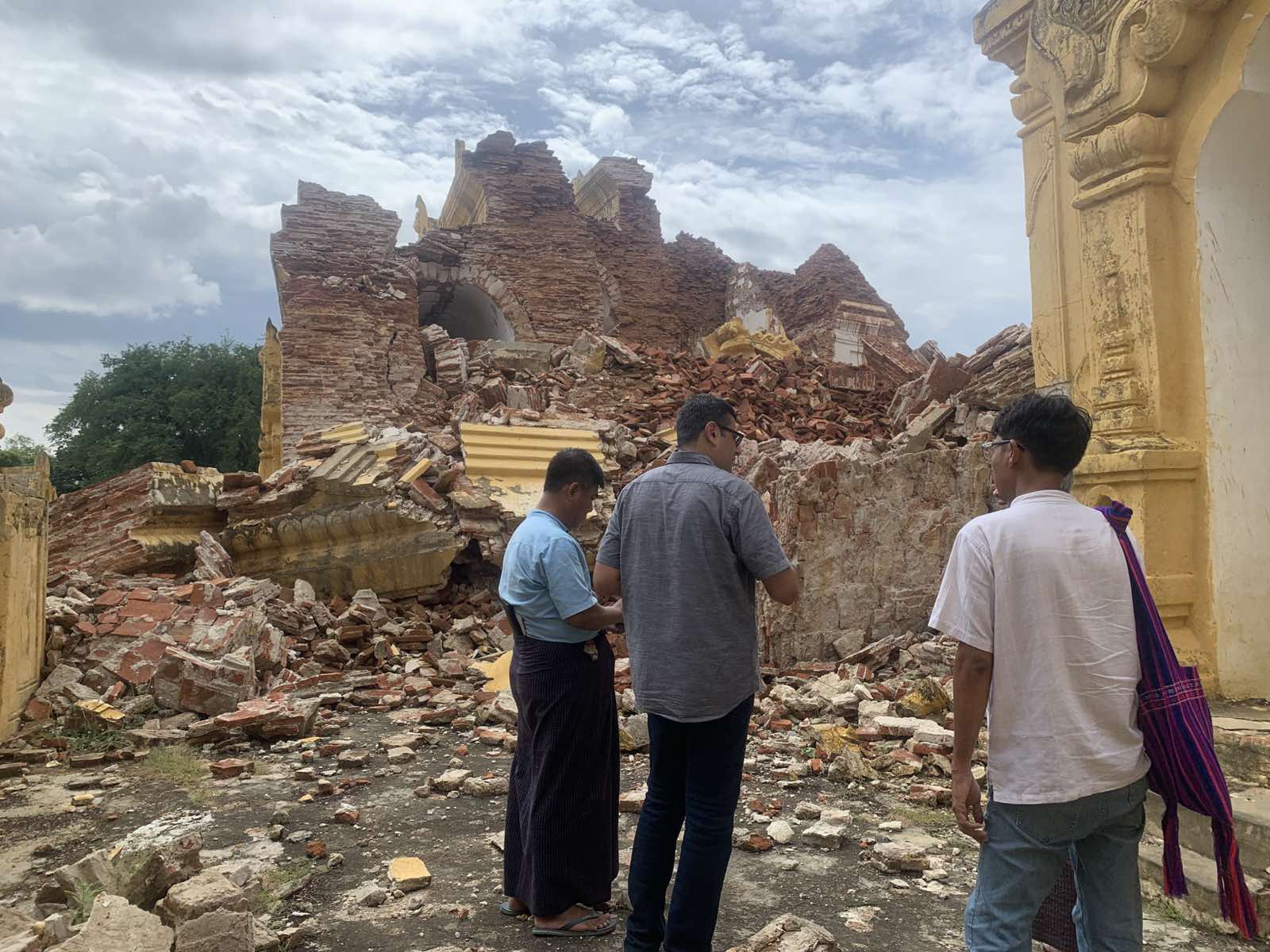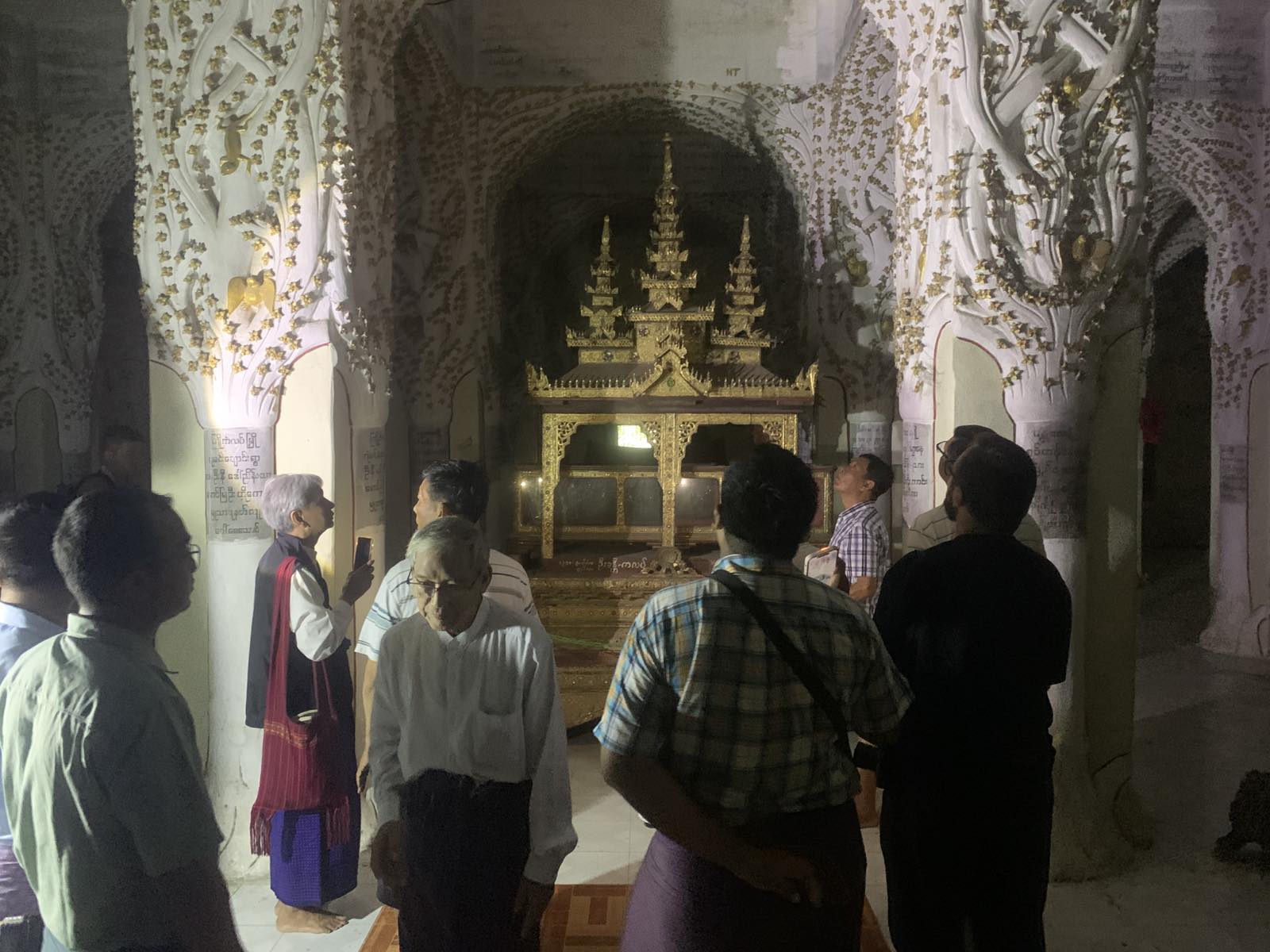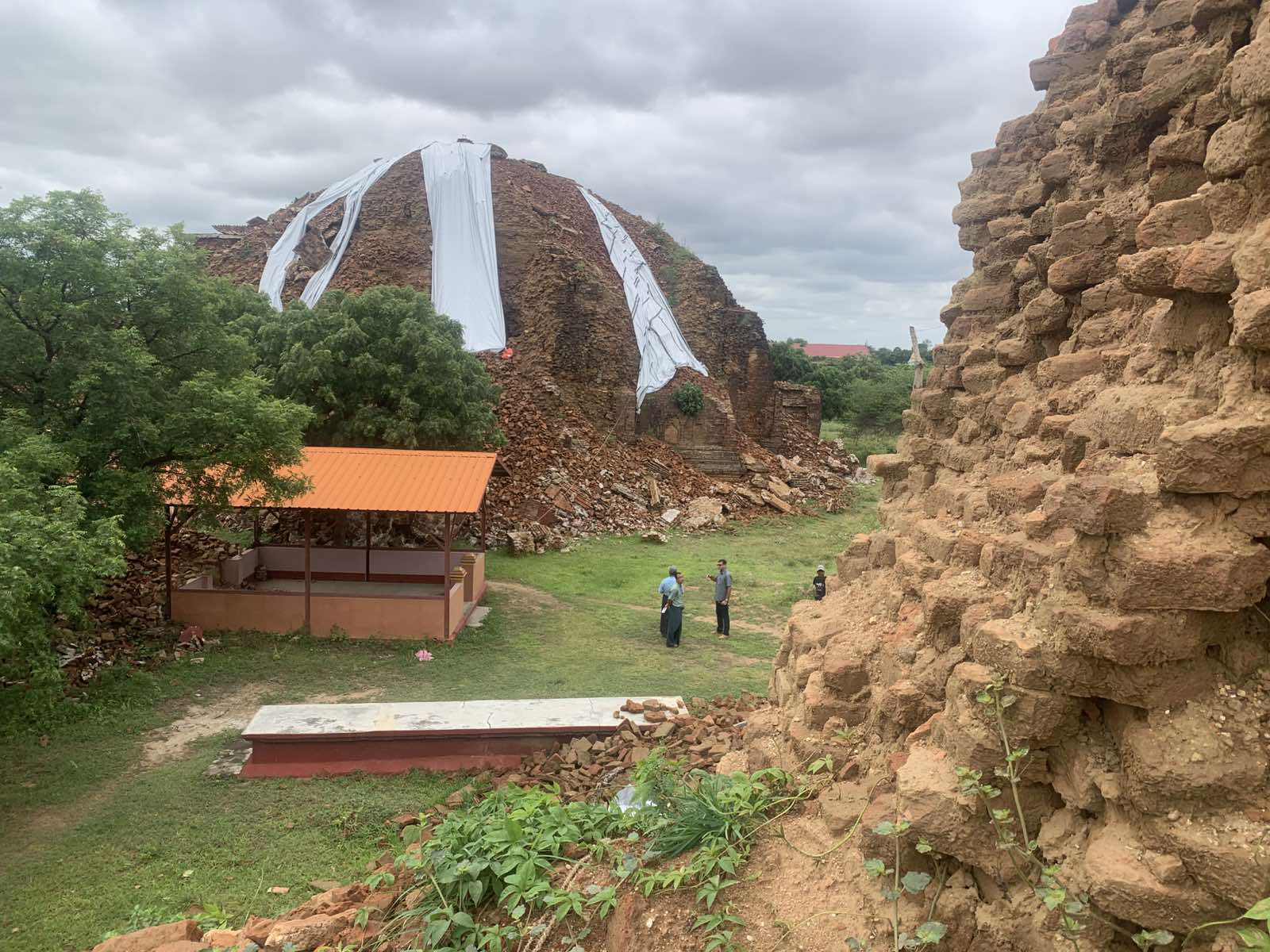Joint Mission Conducted in Myanmar Following the March 2025 Earthquake
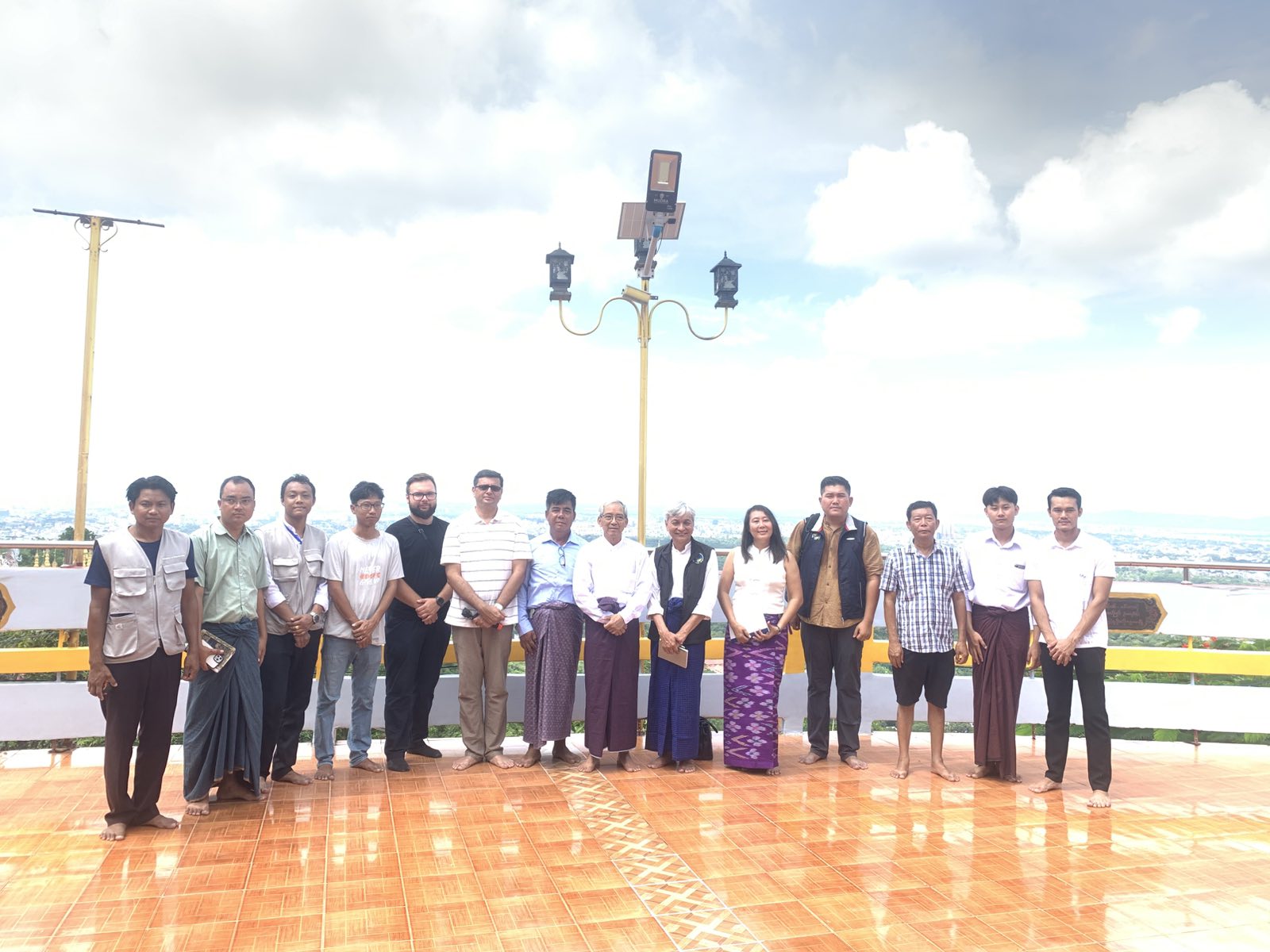
ICOMOS took part in a joint technical mission with UNESCO Bangkok and SEAMEO SPAFA to assess the extensive damage to Myanmar’s cultural heritage following the devastating 28 March 2025 earthquake.
The mission was supported by the UNESCO Heritage Emergency Fund and ICOMOS, with the aim of strengthening national capacities for preparedness, response, and recovery of the cultural sector in Myanmar.
Background
Following the earthquake, significant damage was recorded at the Ancient Cities of Upper Myanmar—Amarapura, Innwa, Sagaing, Mingun, and Mandalay—all included on Myanmar’s Tentative List for World Heritage nomination.
Among the affected sites is the Kuthodaw Pagoda, home to the UNESCO Memory of the World–inscribed stone Buddhist scripture tablets, which sustained serious structural damage. Several national museums, including those in Sagaing, Innwa, Mandalay, and Nay Pyi Taw, were also heavily impacted.
Given the scale of impact, the mission aimed to assess immediate risks, guide emergency measures, and contribute to long-term recovery planning for the cultural sector.
Field Visits and Emergency Actions
From 16 to 21 July, ICOMOS expert Dr. Arun Menon (ICOMOS India) joined on-site technical assessments across Amarapura, Innwa, and Mandalay, working closely with the Department of Archaeology (DOA), the Myanmar Engineering Society (MES) and UNESCO experts.
Key activities included:
16 July – Amarapura
Damage survey at Shwe Gu Gyi Monastery, Odaw Mosque, Pahtodawgyi, and U Bein Bridge
17 July – Amarapura
Emergency stabilization and weather protection measures at Shwe Gu Gyi Monastery
Demonstration of documentation and salvage techniques for local teams
18–19 July – Innwa and Mandalay
Structural inspections at Melnu and Kyauk Lain Monasteries, Innwa Watch Tower, Kuthodaw Pagoda, and Mandalay Palace sites
20 July
Technical consultations with DOA and MES to review findings and recommend next steps
Dr. Menon also refined the Rapid Visual Inspection (RVI) protocol, building on the version originally deployed in 2016 at Bagan following the Chauk earthquake, to better support rapid documentation of earthquake-related structural damage.
Next Steps
The outcomes of this first mission will inform both national and international strategies for heritage recovery and contribute to the wider UN multi-sector assessment process.
A second mission phase is planned for late August 2025, with continuing ICOMOS involvement.
ICOMOS remains committed to supporting the safeguarding of cultural heritage through approaches that are context- specific, inclusive, and adapted to the resources and realities of each community, drawing on both local practices and international best practice.
